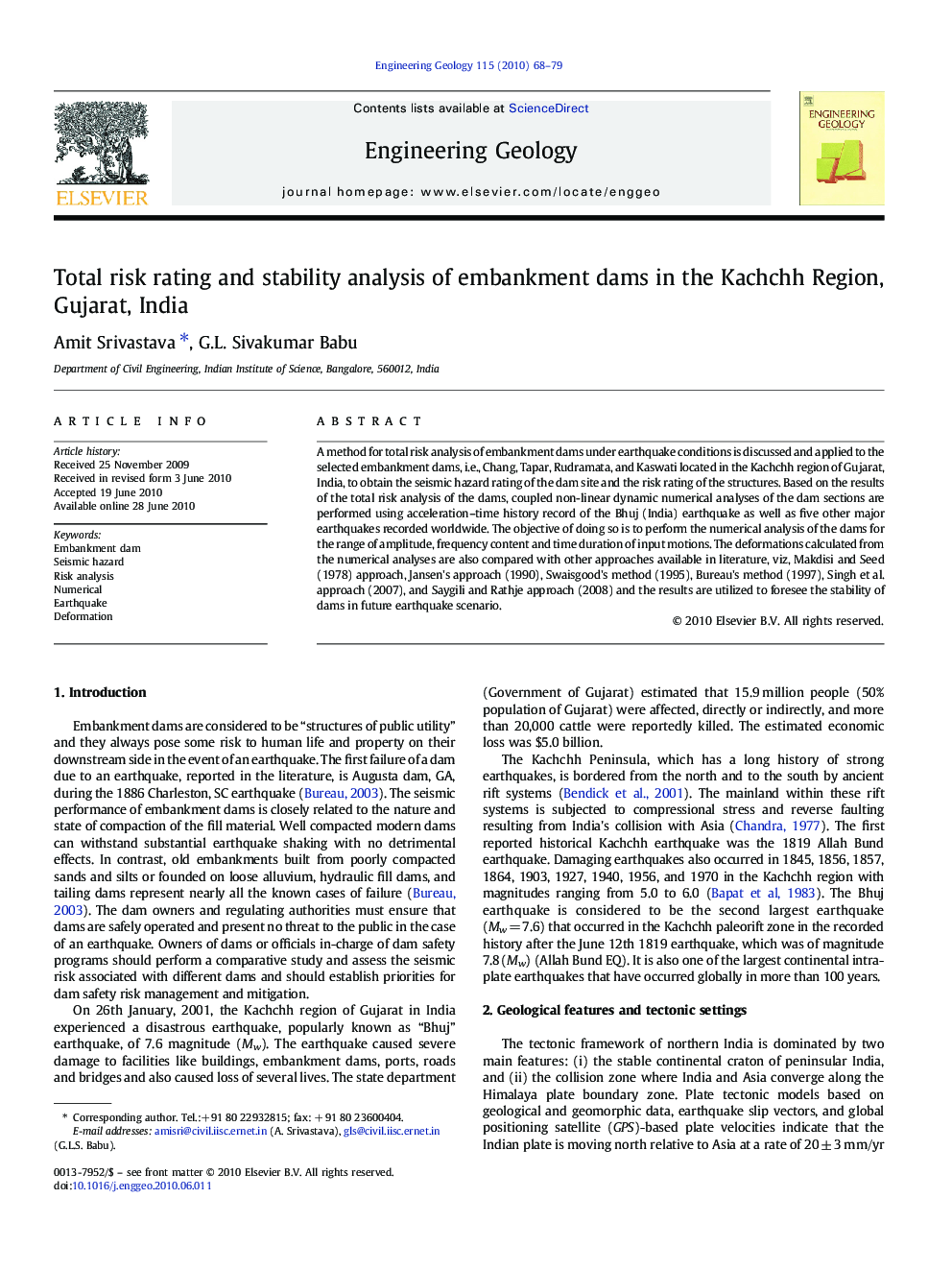| Article ID | Journal | Published Year | Pages | File Type |
|---|---|---|---|---|
| 4744272 | Engineering Geology | 2010 | 12 Pages |
A method for total risk analysis of embankment dams under earthquake conditions is discussed and applied to the selected embankment dams, i.e., Chang, Tapar, Rudramata, and Kaswati located in the Kachchh region of Gujarat, India, to obtain the seismic hazard rating of the dam site and the risk rating of the structures. Based on the results of the total risk analysis of the dams, coupled non-linear dynamic numerical analyses of the dam sections are performed using acceleration–time history record of the Bhuj (India) earthquake as well as five other major earthquakes recorded worldwide. The objective of doing so is to perform the numerical analysis of the dams for the range of amplitude, frequency content and time duration of input motions. The deformations calculated from the numerical analyses are also compared with other approaches available in literature, viz, Makdisi and Seed (1978) approach, Jansen's approach (1990), Swaisgood's method (1995), Bureau's method (1997), Singh et al. approach (2007), and Saygili and Rathje approach (2008) and the results are utilized to foresee the stability of dams in future earthquake scenario.
Research Highlights► Total risk analysis procedure considers both the seismic hazard rating of the dam site as well as risk rating of the dam structures. ► The risk class is used to establish the need for more detailed seismic safety evaluations of dams. ► The prediction of seismic response of earth dam is estimated using advanced numerical tools that can handle both cyclic nonlinear soil behavior and pore pressure generation under dynamic loading condition.
